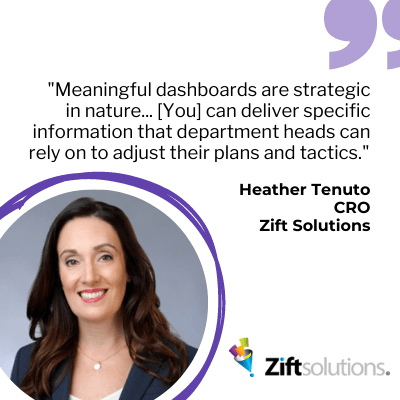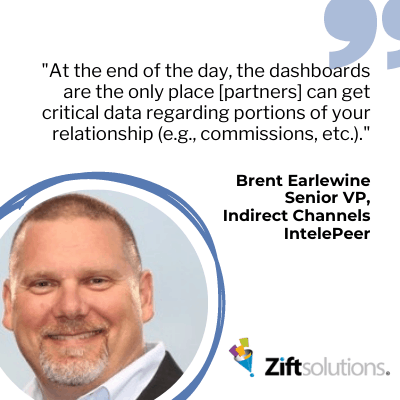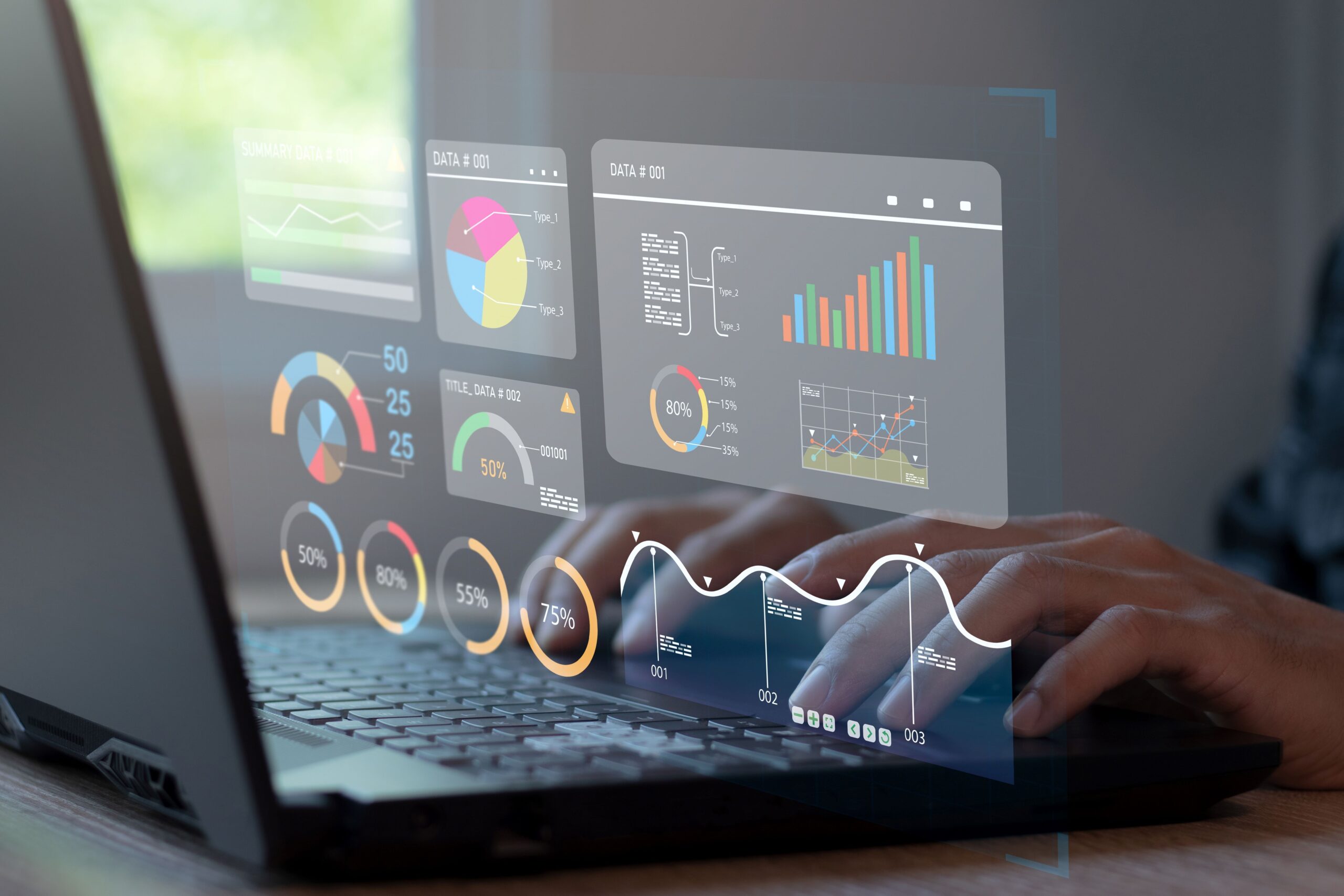-
Channel partner reporting is an essential component to managing channel operations, with a broad reach across your operations.
-
Channel reporting also delivers mission-critical data to channel partners, serving both motivational and relationship-building goals.
-
Dashboards can be leveraged for channel strategy and tactics and meet the needs of many roles in your organization.
-
Right-sizing your dashboards and their contents for specific roles or relationships is essential to a successful channel partner reporting practice.
-
Channel experts advise a range of use cases and best practices, detailed below.
Ours is a data-driven world. There’s little doubt about that, and channel programs are no exception. But, as with all programs that aim to cohesively tackle both hard (quantitative) and soft (qualitative) measurement, establishing solid channel partner reporting practices is often viewed as both a science and an art.
To pull the curtain back on this tricky subject, we talked to 9 channel experts to unpack the goals and challenges of channel reporting. Along the way, we also picked up some best practices to share.
Understand and Analyze Your Channel Partner Program
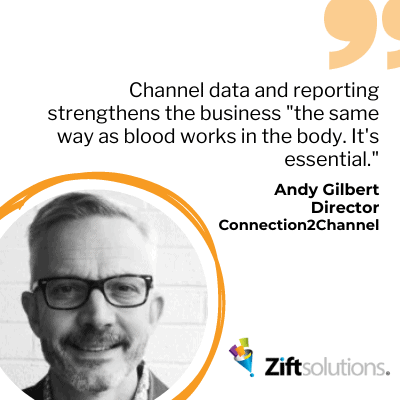 Channel data reporting, when done right, can deliver benefits to your company and your partners. Examples of this include:
Channel data reporting, when done right, can deliver benefits to your company and your partners. Examples of this include:
- Improved decision-making. Whether the goal is finding, selecting and activating the best partners or designing the right program to drive partner capability, capacity and motivation, the right data allows the organization and individuals to make faster, more informed decisions. It also enables more effective advocating for investment.
- Goal definition and attainment. Monitoring the right data helps organizations and individuals set realistic and attainable goals, define the steps needed to reach them, chart progress, and determine when and how to adjust to ensure they are achieved.
- Accountability. It is difficult to hide behind data. For example, if one channel account manager (CAM) isn’t performing well, the right data should let you know what is going wrong and why. It is important to create accountability. The result can make channel management and team members, as well as partners, more productive.
- Higher partner satisfaction and retention. Much like improving the customer experience (CX), improving partner experience (PX) is an essential avenue for revenue growth. To do so, organizations need access to data to uncover strengths that can be leveraged and prioritize the weaknesses that must be addressed to drive success.
- Reduce costs and optimize efficiencies. High-grade data is a great defense against overpayments, inventory imbalances, ineffective incentive programs, inefficient marketing spend, and even fraud.
If you’re looking at this list and thinking that’s practically the whole business, you’re right. Andy Gilbert, Director for Connection2Channel, put it this way: Channel data and reporting strengthens a business “the same way as blood works in the body. It’s essential.”
Why Channel Partner Reporting is Vital to Partner Program Success
Kris Blackmon, Chief Channel Officer for JS Group, reminds us of these oft-repeated words of wisdom: “You can only manage what you measure. It’s almost impossible to improve if you don’t have a solid understanding of your metrics. Data and reporting, having those quantitative metrics, is the only way to track that improvement (or lack thereof),” she says.
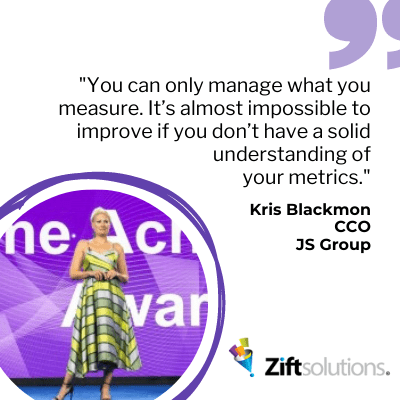 Dede Haas, Channel Strategist, Practitioner and Coach at DLH Services, agrees. “I find that many folks want to rely on their gut feeling when it comes to reporting,” she says. “But you want to know that what you’re doing for your partners is actually working—and that gut feeling won’t always be correct. Piecing together real data is important and enables you to see what’s going on in the business, as well as gather partner thoughts or feedback. [And] it’s a quick way to accurately check [return on investment (ROI)].”
Dede Haas, Channel Strategist, Practitioner and Coach at DLH Services, agrees. “I find that many folks want to rely on their gut feeling when it comes to reporting,” she says. “But you want to know that what you’re doing for your partners is actually working—and that gut feeling won’t always be correct. Piecing together real data is important and enables you to see what’s going on in the business, as well as gather partner thoughts or feedback. [And] it’s a quick way to accurately check [return on investment (ROI)].”
Khali Henderson, Senior Partner for channel marketing firm BuzzTheory, points out that channel reporting is necessary to allocate resources properly. “You can have the best talent in the industry at your fingertips, but that’s only an advantage if you know when and where to use it,” she says. “Of course, you want to identify and shore up weaknesses, but you also want to know what you’re doing right, turn it into a best practice and scale it up.”
 Henderson offers the example of providing high-value leads and the assistance of your best sales engineers to the most likely partners to close the business. “In doing so, you will simultaneously increase partner satisfaction with important partners while increasing the probability of converting that lead into a customer,” she says.
Henderson offers the example of providing high-value leads and the assistance of your best sales engineers to the most likely partners to close the business. “In doing so, you will simultaneously increase partner satisfaction with important partners while increasing the probability of converting that lead into a customer,” she says.
Create a Channel Partner Dashboard
Dashboards are powerful tools on two fronts—reporting and motivating. Reporting is essential to measuring and communicating performance internally and with partners. As many of our experts pointed out, the right data identifies strengths and weaknesses and delivers the tools you need to manage your channel program effectively. Dashboards make data analytics easier by showing you key metrics (and their trajectories) at a glance.
Dashboards also are fantastic tools for motivating your internal teams and partners to improve their performances. Channel expert Matthew Peeples says dashboards play well in today’s rewards culture and spark friendly competition among partners. “Today’s society is points-driven,” he says. “Every fast-food restaurant has a rewards program. The same is true for travel. We’ve been conditioned to track our progress and achieve levels. Partners want to know where they rank compared to their competition and how to surpass them or move to the next level of a program.”
The key is developing the right dashboard—or dashboard set—for the right circumstances. Getting the right output requires planning with all stakeholders to get the information you need from your partner relationship management (PRM) solution.
Heather Tenuto, Chief Revenue Officer for Zift Solutions, says dashboards are essential to making both strategic and tactical adjustments. “Meaningful dashboards are strategic in nature,” she says. “Yes, you have all the top-level, instrument-panel data looking at the overall performance of your channel program. But you also can deliver specific information that department heads can rely on to adjust their plans and tactics. At the same time, you need to set partners up for success while, hopefully, motivating them in that process.”
Lionel Farr, Chief Technology Officer for Zift Solutions, agrees and points out that the right dashboard requires both human and technological know-how. “When it comes to dashboards, you really do get out of them what you put into them,” he observes. “That’s not just human input. Hopefully, you’re working with a strong enough PRM solution to generate the metrics you need from the tool itself but also import the metrics you need from other solutions, like your CRM, via API.”
While you’ll want to customize a dashboard to meet your needs, that doesn’t mean you must reinvent the wheel. Some well-established and proven dashboard metrics can get you started. We’ve provided some examples from ZiftONE to give you a jumpstart toward developing or refining your dashboards.

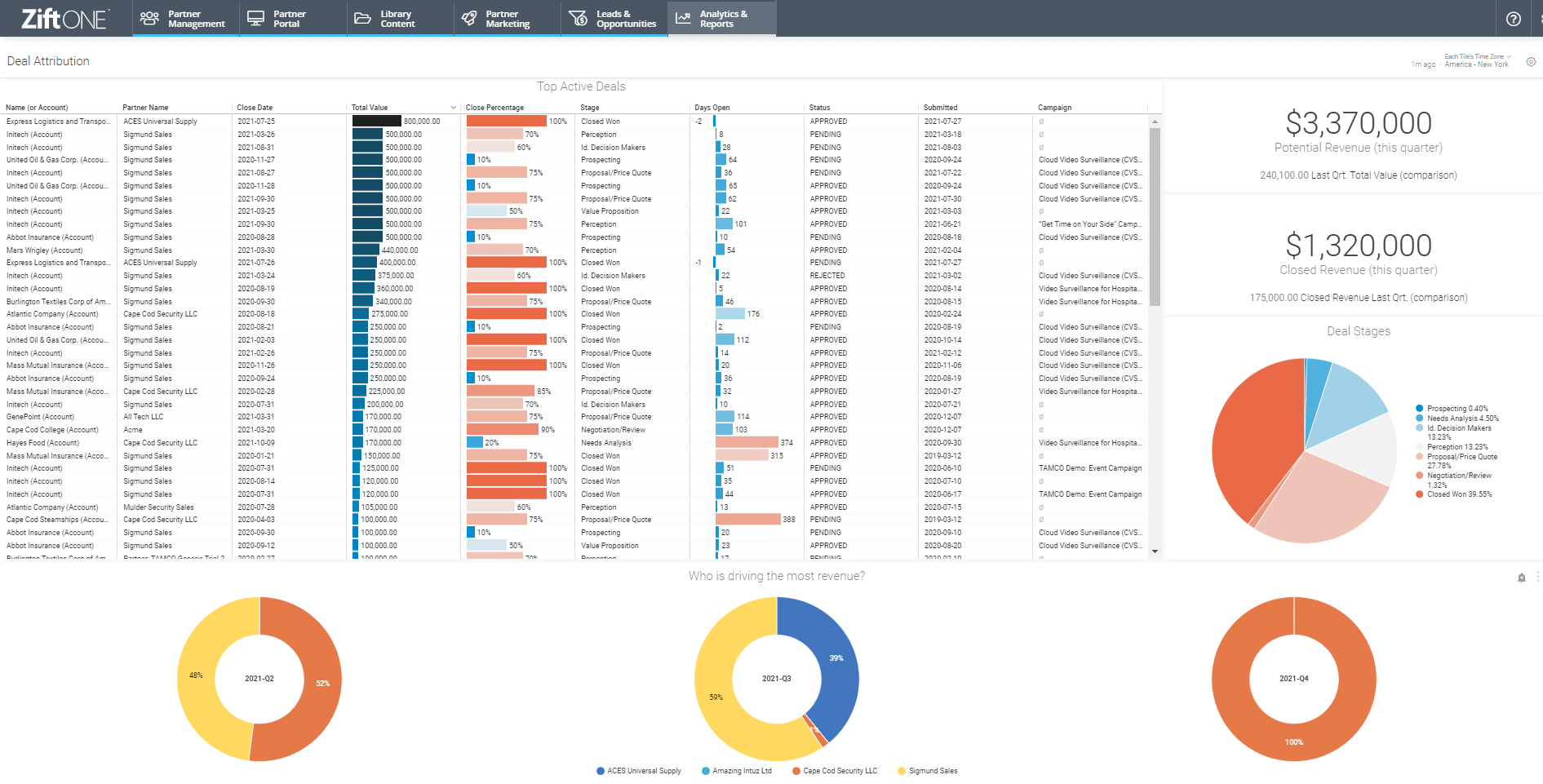

No dashboards? No worries. While dashboards are the preferred tool, you can—and should—generate some of the output you need as reports. “We don’t use the actual dashboards, but we have standardized reports that can be used as source material for content on performance metrics, etc.,” says Eileen Corrigan, Strategic Channel Leader.
10 Channel Partner Reporting Best Practices from Channel Leaders
Now that you’ve got sample dashboards and advice on putting data to good use, let’s dig into some best practices for channel partner reporting that you can put to work right away:
- Centralize Channel Partner Reporting Data
- Select a Channel Partner Reporting Tool with a Strong API
- Make Executive Dashboards for Channel Partner Reporting
- Curate Shared Channel Partner Reporting Data for All Stakeholders
- Set Up Channel Partner Reporting with Consistency in Mind
- Leverage Channel Partner Reporting Dashboards to Build Partner Relationships
- Balance Channel Partner Reporting Data with Relationship Building
- Tell a Story with Channel Partner Reporting Dashboards
- Track the Behavior of Partners’ Customers, Too
- Make Channel Partner Reporting About Your Partners’ Businesses
Best Practice #1: Centralize Channel Partner Reporting Data
 Zift’s Farr honed in on the importance of data centralization to delivering thorough, actionable information. Most companies are coming up short on this front. Complete, accurate and timely data is table-stakes in all aspects of business, including channels, and it continues to grow in importance.
Zift’s Farr honed in on the importance of data centralization to delivering thorough, actionable information. Most companies are coming up short on this front. Complete, accurate and timely data is table-stakes in all aspects of business, including channels, and it continues to grow in importance.
The silver lining to this message should become an action item for you; tackling decentralized data today can put you ahead of many in the channel. That’s a textbook competitive advantage.
Best Practice #2: Select a Channel Partner Reporting Tool with a Strong API
We’ve said it before, and we’ll say it again. Dashboard fatigue is real; your partners are given dashboards by nearly every vendor and have it worse than most. Your PRM should be able to pull in many data sources to deliver a holistic view of your channel operation, but it’s vital that you help partners do the same, says Zift’s Farr.
“Ideally, you’ll have a solution that delivers everything you need to know about your channel through native reporting and data imported from other sources via API,” Farr says. “Your partners need that same ability in their own firms. Your PRM should be able to deliver data or preformatted widgets they can use in their own dashboard solutions.”
Best Practice #3: Make Executive Dashboards for Channel Partner Reporting
Sometimes dashboards offer too many features and customizations for senior managers. BuzzTheory’s Henderson says you can supplement dashboards that are actionable for your channel specialists with summary data that the C-suite doesn’t have to decode.
“You can overbuild a dashboard,” says Henderson. “That’s true in general and also by role. Specialist dashboards can be awesome for practitioners, but executives don’t want to have to trudge through dozens of widgets or spend 10 minutes making data selections to get the data they need. In fact, a fair number of executives will ask for PDFs of dashboard data instead of logging in. And on the other end of the spectrum, some will want to port summary data from your dashboard into their own dashboards. A carefully crafted executive dashboard can meet all of these needs.”
Best Practice #4: Curate Shared Channel Partner Reporting Data for All Stakeholders
Henderson’s advice about right-sizing dashboards by role also applies to shared boards, says Connection2Channel’s Gilbert. That involves introducing partners to dashboards and loading them with data that measures shared goals.
“Familiarity with dashboards is key,” he says. “But they must be displaying metrics important to all stakeholders (i.e., designed and specified together).”
Channel expert Peeples agrees, adding that getting input from multiple parties in advance can help you establish the right data early. “Leverage a Partner Advisory Board to give you the metrics they want to see on the dashboard,” he says.
Incorporating the right data into your dashboards is central to getting partners to use them. But “don’t assume they will use them; assume they won’t,” Gilbert says. “Use data to define performance—[it’s the] best way to get partners to engage.”
Best Practice #5: Set Up Channel Partner Reporting with Consistency in Mind
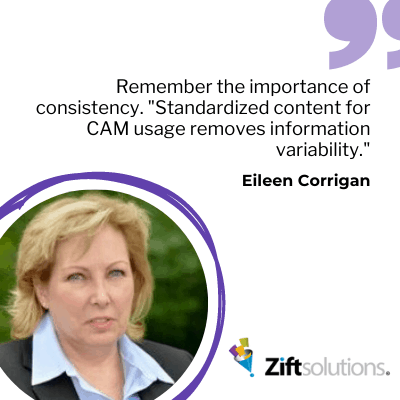 Take the time to confidently choose data points you can leverage to drive improvements over a long period.
Take the time to confidently choose data points you can leverage to drive improvements over a long period.
Channel expert Peeples points out that channel reporting data is only helpful if the metrics are stable. “Using the same metrics month over month and year over year provides a strong foundation to understand what is working or not working in a channel program,” he says. “If you are constantly changing the metrics, then it is difficult to measure success.”
Corrigan also drives home the importance of consistency. “Standardized content for CAM usage removes information variability,” she says.
Best Practice #6: Leverage Channel Partner Reporting Dashboards to Build Partner Relationships
Brent Earlewine, Senior Vice President for Indirect Channels at IntelePeer, points out that partner-facing dashboards are helpful in keeping communication lines open and engaging partners. “[Dashboards can be used] during 1:1 meetings, funnel reviews, deal updates and quarterly business reviews (QBRs) as well as embedded in the business planning process,” he says.
JS Group’s Blackmon agrees. “You have to be able to reference pipeline and revenue metrics when you’re helping partners plan for the upcoming year or quarter,” she says. “Too many vendors skip the annual business planning or QBR step, and that’s a giant miss. You want to be involved in your partners’ business as much as they’ll let you. Understand how they make money and how they structure their businesses, so you know where to plug in. Understand their growth goals. Help them calculate cash flow.”
Blackmon also recommends referencing customer engagement metrics to help partners pinpoint where they need your help in the sales process. “Sales pitches are often subjective, but data doesn’t lie,” she says. “It’s super convincing when you can show a partner hard and fast numbers during your touch base meetings (which you should be having regularly).”
Best Practice #7: Balance Channel Partner Reporting Data with Relationship Building
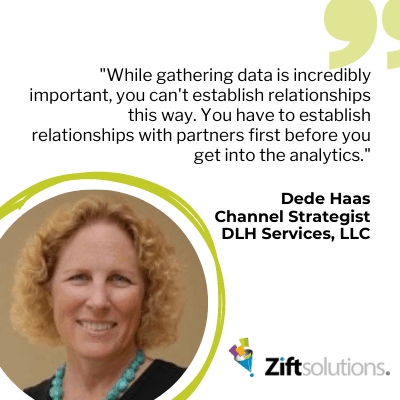 Keep in mind that data analytics is vital, but it’s only one tool in your channel success toolbox. Take care to use it in proper balance with other strategies, especially a human touch.
Keep in mind that data analytics is vital, but it’s only one tool in your channel success toolbox. Take care to use it in proper balance with other strategies, especially a human touch.
“While gathering data is incredibly important, you can’t establish relationships this way,” says DLH Services’ Haas. “You have to establish relationships with partners first before you get into the analytics.”
Haas says some vendors have become so enamored with data that they are alienating potentially productive partners.
“I work with many companies in the [tech] channel—MSPs, VARs, etc.—[that] feel like they are just a number,” she says. “Many of the vendors they are working with are trying to build a big partner channel (quantity) rather than getting to know their partners first (quality) to see if they can build a business relationship together. Hard data does not mean anything if you can’t get along or develop trust.”
Haas notes that the over-reliance on data may begin with targeting and recruiting against an Ideal Partner Profile, but it often continues through enablement and engagement phases of the partnership.
“Data is gathered, lists are run, and decisions are made based only on numbers,” says Haas. “The relationship is transactional.”
Best Practice #8: Tell a Story with Channel Partner Reporting Dashboards
If you’ve recently visited the websites of leading news outlets, you undoubtedly noticed that data is used to tell stories. And as any successful content marketer will tell you, stories drive engagement. Zift’s Tenuto says that turning some dashboards (or sets) into storyboards can impact partner motivation in a big way.
“Every relationship has a story, including your partnership,” says Tenuto. “Structuring your boards to tell that story—by tracking progress over time—can be a powerful driver of your ongoing relationship. Are earnings increasing? Are deals accelerating? Everyone wants their story to have a happy ending. The visualization of that kind of information, whether it’s good or in need of improvement, can engage your partners in a visceral way.”
Best Practice #9: Track the Behavior of Partners’ Customers, Too
Perhaps the most significant character in the story of your partnership is your joint customer. So, it’s important to help partners track customer behavior data, too, says JS Group’s Blackmon.
“[Customer behavior] is one of the most valuable uses of data, and it’s important for partners, many of which struggle with gaining and keeping customers,” Blackmon says. “It’s also important for vendors trying to pinpoint where partners are losing the sale and how they can help leads progress through the pipeline.”
Marketing, sales and customer success teams can study data to get a clear picture of where they’re losing customers and prospects, she says, advising vendors to:
- Use marketing data to A/B test different messages
- Leverage Salesforce to determine where in the sales pipeline you’re losing leads
- Study NPS and CSAT scores to get an idea of why customers churn
“When you apply this data to revenue gains or losses,” Blackmon says, “you can arrive at a total cost for your customers, get an understanding of how each function is positively or negatively impacting revenue, and see where improvements can be made to increase customer lifetime value.”
Best Practice #10: Make Channel Partner Reporting About Your Partners’ Businesses
Your partnership should have an audience of one—your partners. Reporting and/or dashboards built for partners should deliver value in ways that are meaningful to them, not just to you, advises IntelePeer’s Earlewine.
“Show them the value of the data to help them run their businesses and how it supports their KPIs and their growth metrics,” he says. “At the end of the day, the dashboards are the only place they can get critical data regarding portions of your relationship (e.g., commissions, etc.).”
Taking our best practices on the road? Here are our 10 best practices for channel partner reporting.
Have anything you want to add? Sound off in the comments below.
Laz Gonzalez
Laz Gonzalez is Chief Strategy Officer at Zift Solutions. A prominent industry analyst and thought leader, Gonzalez brings unparalleled channel expertise to Zift and has served as strategic adviser to leading B2B channel programs worldwide.

